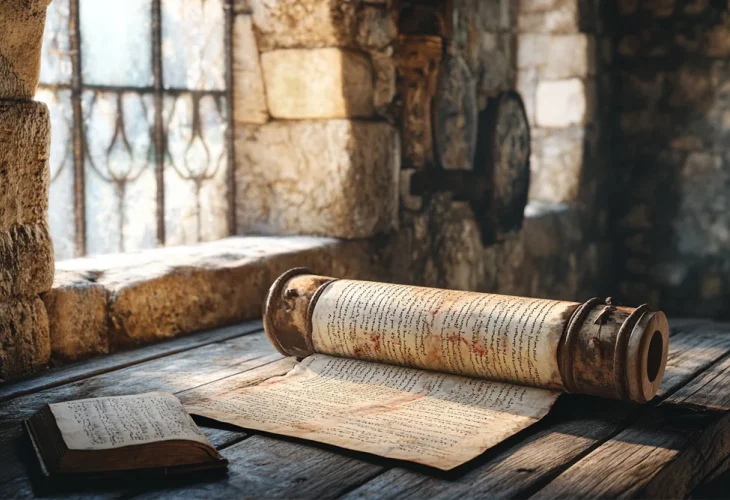History and Archaeology
The Hidden Story of the Erfurt Manuscripts
Bloodstains on the Torah scrolls reveal a painful past that still speaks today

In 1868, a German scholar named Adolf Jerschowski published a book on Jewish history. In it, he mentioned an old manuscript of the "Jerusalem Talmud" located in the Evangelical Church library in the city of Erfurt, Germany. This detail caught the attention of Rabbi Zacharias Frankel, a well-known Talmudic scholar. Sensing it might be an important discovery, he traveled to Erfurt to investigate.
To his surprise, the manuscript wasn’t the Jerusalem Talmud, but rather the Tosefta, a collection of teachings from the time of the Mishnah. What he found would later become known as the Erfurt Manuscript, considered the oldest and most authoritative version of the Tosefta. It was eventually included in the Vilna Shas (the printed set of Talmud used to this day).
We owe thanks to the dedicated librarians of the Erfurt Church who preserved the manuscript and allowed Rabbi Frankel access. Alongside this Tosefta were many other rare and valuable Jewish manuscripts, together known as the Erfurt Collection. In 1879, the church sold the entire collection to the Berlin State Library for only 5,000 German marks, where it remains until today. Visitors who ask respectfully can view this precious treasure.
The city of Erfurt once held a central place in Ashkenazi Jewish life. It was home to great rabbis such as Rabbi Eleazar of Worms and Rabbeinu Asher (the Rosh), among others.
Around a decade ago, the Berlin State Library digitized its manuscript collection, making it available online for scholars and researchers. One of them, Ephraim Kaspi, a specialist in ancient texts, made a haunting discovery.
The background was already known: the Erfurt manuscripts had not come into the church’s hands through honest means. They were looted during a brutal massacre. In the year 1349, as the Black Death swept across Europe, the Jewish community of Erfurt was accused of causing the plague. On Shabbat, a Christian mob attacked and murdered 3,000 Jews. Many were burned alive in their homes. In the synagogue, Rabbi Alexander Siskind was murdered in the middle of reading from the Torah. Torah scrolls and manuscripts were desecrated, plundered, and destroyed. What remained was seized by the church and later sold.
The ancient Erfurt synagogue itself was sold to a local resident, turned into a banquet hall, and during the Holocaust it operated as a restaurant, a detail that may have saved it from Nazi destruction. Today, over 800 years after it was first built, the synagogue has returned to Jewish hands. A nearby mikveh (ritual bath) and a section of the old Jewish cemetery have also been uncovered.
Kaspi's chilling discovery concerned the exact date of the 1349 massacre, a point that had long been debated. He believed that the Torah scrolls used on the day of the attack would have remained open to that week’s portion. Sure enough, the three Torah scrolls preserved from that community each showed signs of specific parashot: Tazria, Pinchas, and Bo. Based on the Hebrew calendar, researchers confirmed that the massacre happened on Shabbat, the 1st of Nisan 1349, when Parashat Tazria was read. The second scroll was open to the Rosh Chodesh (new month) reading in Pinchas, and the third to Parashat HaChodesh in Bo, exactly as read on a Shabbat Rosh Chodesh in the month of Nisan.
But the most heartbreaking discovery was what appeared on the scrolls themselves. On the digitized scans in the Berlin State Library, Kaspi noticed dark stains, bloodstains, at those exact portions. Blood from the martyrs who were attacked while reading from the Torah. In a machzor (High Holiday prayer book) from the same collection, similar stains were found on the pages for Shabbat Rosh Chodesh prayers.
This is not just blood on parchment. It is the cry of our ancestors. Their lives taken, their holy books misused and sold for profit. As the prophet once said: “Have you murdered and also inherited?” These bloodstains are a silent testimony, reaching us from seven centuries ago.
May Hashem remember with compassion the righteous men, women, and children of Erfurt who gave their lives to sanctify His name. And may He avenge the blood of His servants that was spilled so cruelly.

